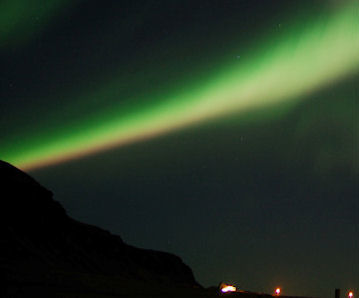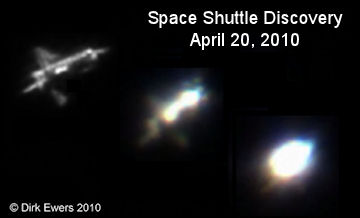NEW AND IMPROVED: Turn your iPhone or iPod Touch into a field-tested global satellite tracker. The Satellite Flybys app now works in all countries. | | | BREATHTAKING IMAGES OF THE SUN: NASA's Solar Dynamics Observatory is beaming back stunning new images of the sun, revealing our own star as never seen before. Even veteran solar physicists say they are amazed by the data. Take a deep breath, then take a look. ASH AND AURORAS: There something in the air in Iceland--and its not all volcanic ash. Last night (April 22nd), recently-gray Icelandic skies turned green when a solar wind stream hit Earth's magnetic field: 
"I hope these are not the last auroras of spring," says photographer Wioleta Zarzycka. "The midnight sun is coming to the Arctic Circle, and soon we may not be able to see the Northern Lights." Then it would be all ash. But it hasn't come to that yet. The solar wind is still blowing and more geomagnetic activity is possible tonight. High-latitude sky watchers should remain alert for auroras. April Northern Lights Gallery
[previous Aprils: 2009, 2008, 2007, 2006, 2005, 2004, 2003, 2002] SHUTTLE FLARE: On April 20th, just hours before space shuttle Discovery landed in Florida, the orbiter soared over Germany. From the darkness of his backyard observatory, Dirk Ewers watched the shuttle's last pass and was amazed when Discovery suddenly and dazzlingly flared. Here are three frames from a video he recorded through his 5-inch refracting telescope: 
Click to make the shuttle flare!
There was no explosion. The flare is sunlight reflecting from shiny surfaces in the shuttle's payload bay. The bay doors were open at the time of the overpass, and the bay contained the big, glistening Leonardo Multi-Purpose Logistics Module. "At the beginning of the flare, I think Leonardo can be seen as a bright point in a partially dark open payload bay," says Ewers. Leonardo is a cargo container. It was used this month by the crew of Discovery to ferry supplies and laboratory equipment to the International Space Station (ISS). Later this year, Leonardo will be pressurized and permanently attached to the ISS as a roomy new module. Then the ISS will have the same "flare capability" just demonstrated by the shuttle.
| 
